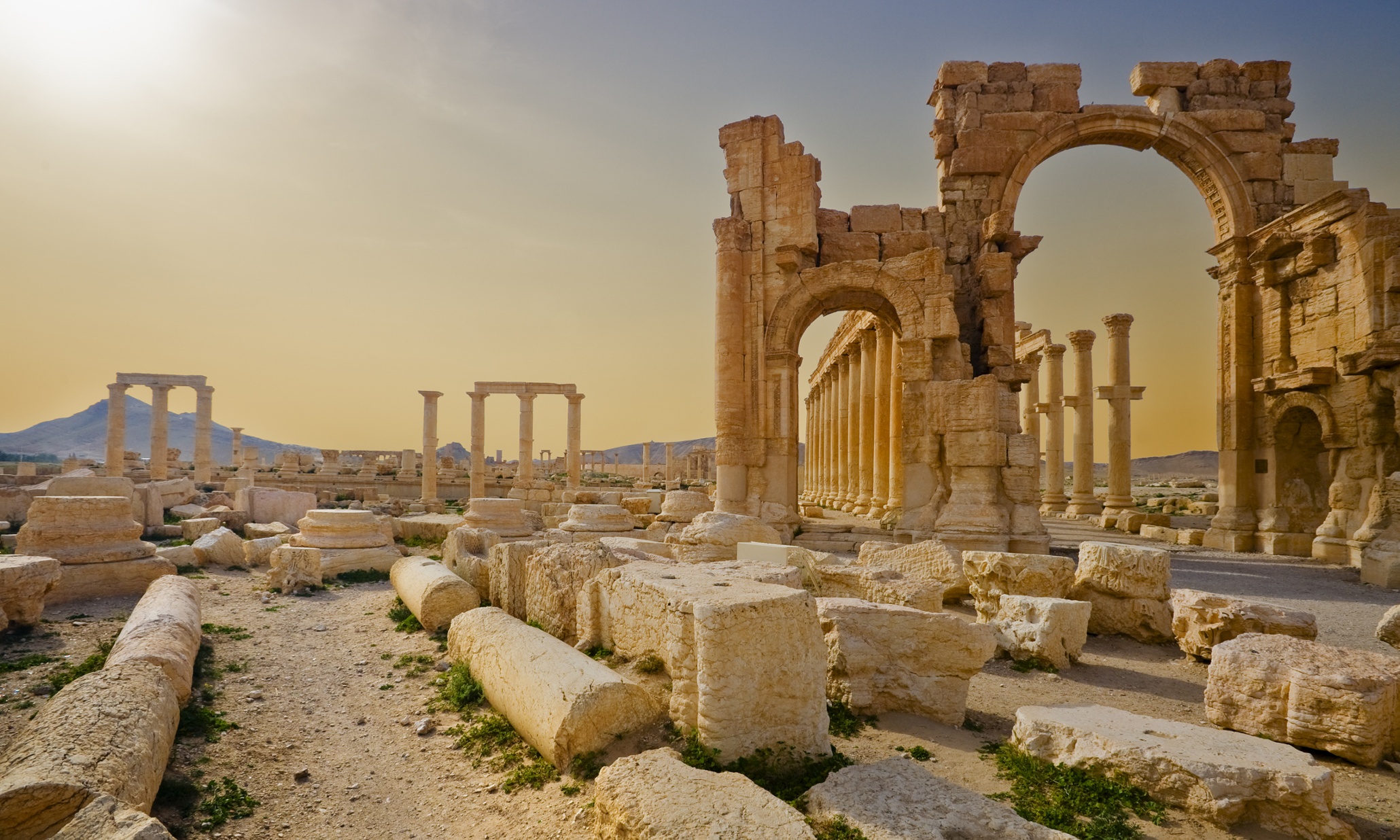Syrian Army Drives Daesh Out of Palmyra
NEW DELHI: In a major victory, Syrian forces have driven out the Islamic State from Palmyra -- an ancient city in Syria that had been captured by the militant group in May 2015. Palmyra has remained in the headlines since, as shocking news of the Islamic State destroying culturally significant buildings and artefacts routinely emerged.
Along with ancient columns, the militant group blew up the Temple of Bel, the temple of Baalshamin and the Arch of Triumph -- built around 1 century AD. Three funerary towers, including the Tower of Elhabel, which was built in AD103 and was well preserved, were blown up.
There is no doubt that the Islamic State caused irreversible damage to Palmyra, including destroying the main temple site -- the Temple of Bell.
The good news, however, is that surveillance after the recapture shows that some of Palmyra’s ruins have appeared to survive, including the Agora and the celebrated Roman theatre.
Maamoun Abdelkarim, Syria’s antiquities chief, told AFP that authorities had been “expecting the worst” but the landscape, in general, is in good shape”.
Abdelkarim told The Guardian that a team of archaeologists would go to Palmyra in the coming days to assess the damage to its monuments, and pledged to rebuild the destroyed temples and arch. “We will issue a challenge to international terrorism, that no matter what you do you cannot erase our history, and we will not sit idle and weep over the ruins,” he said.
Reports suggest that the Syrian troops who fought the Islamic State to win back Palmyra were relieved when they saw that some of the artefacts and structures have remained. “We were so scared we would enter the ruins and find them completely destroyed,” one Syrian soldier told AFP. “We were afraid to look ... But when we entered and saw it, we were relieved,” he said.
According to The Guardian, one soldier stood sobbing loudly in the ruins after Syrian troops retook the city. “I’m sad to see some of the old city destroyed, but I’m also weeping for my brother, who died in the battle here,” the soldier said. “By taking the city, I feel I’ve avenged his death.”
This statement is perhaps indicative of just how big a victory Palmyra is for the Syrian forces. It is not just winning a city back, it is reclaiming a city that is testament to the rich history of Syria as well as its diversity.
Here is a look at Palmyra:
Temple of Baal-Shamin, Palmyra
Dedicated in 131, the temple of Baalshamin has been called Palmyra's "most significant surviving temple other than that of Bel". Baalshamin or Ba'al Šamem[2] (Aramaic: ܒܥܠ ܫܡܝܢ), lit. 'Lord of Heaven(s)', is a Northwest Semitic god and a title applied to different gods at different places or times in ancient Middle Eastern inscriptions, especially in Canaan/Phoenicia and Syria. The title was most often applied to Hadad, who is also often titled just Ba‘al. Baalshamin was one of the two supreme gods and the sky god of pre-Islamic Palmyra in ancient Syria. (Bel was the other supreme god.) There his attributes were the eagle and the lightning bolt, and he perhaps formed a triad with the lunar god Aglibol and the sun god Malakbel.
Gate of the fortified Temple of Bel
Center of Bel
The Temple of Baal (Arabic: معبد بل) is an ancient stone ruin located in Palmyra, Syria. The temple, consecrated to the Semitic godBaal, worshipped at Palmyra in triad with the lunar god Aglibol and the sun god Yarhibol, formed the center of religious life in Palmyraand was dedicated in 32 CE.[1][2] Aedeen Cremin considers its ruins the "best preserved" at Palmyra.[3]
Lion in the garden of Palmyra Archeological Museum
Grande collonade street
The Great Colonnade at Palmyra was the main colonnaded avenue in the ancient city of Palmyra in the Syrian Desert. The colonnade was built in several stages during the second and third century CE and stretched for more than a kilometer. It linked theTemple of Bel, in the southeastern end of the city, to the West Gate and the Funerary Temple in the northwestern part.
Palmyra theater
Diocletian's Camp, Palmyra
Hadrian's Gate
This arch is named for the Roman emperor who visited Palmyra in 129 A.D. and conferred upon it the status of a "free" metropolis within the empire.
Qalat ibn maan
View of Palmyra
The tariff court





